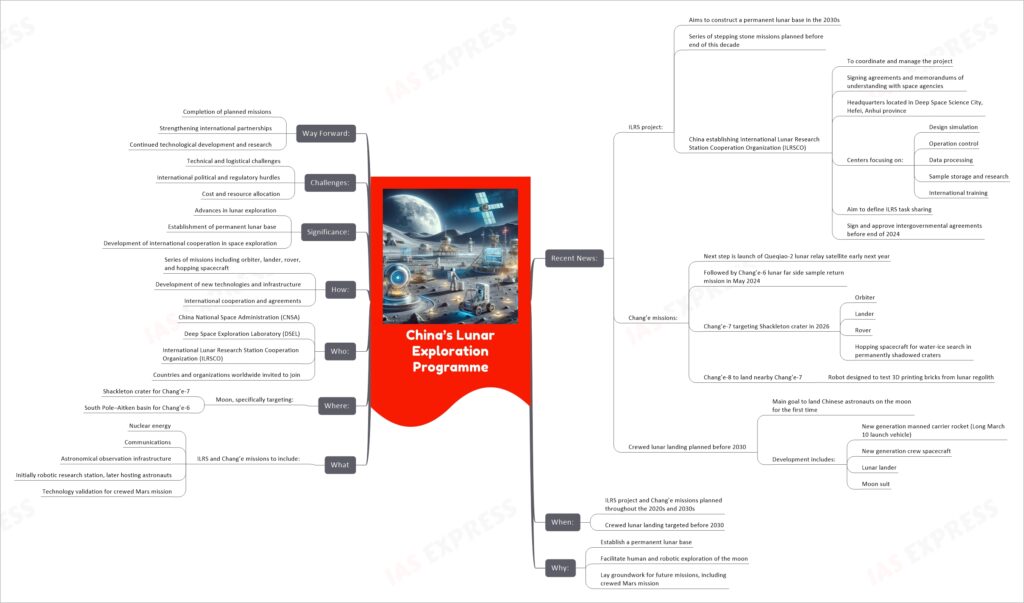China’s Lunar Exploration Programme

China’s Lunar Exploration Programme is a broad and ambitious initiative aimed at exploring the Moon through a series of robotic missions and eventually establishing a permanent lunar base in the 2030s. This programme encompasses the launch of various Chang’e missions, each with specific goals ranging from lunar sample returns to testing technologies for in-situ resource utilization and constructing infrastructure for a robotic, and later, crewed lunar research station. The programme also includes plans for China’s first crewed lunar landing before 2030, leveraging breakthroughs in space technology, including new spacecraft, launch vehicles, and moon suits. Central to these efforts is the International Lunar Research Station (ILRS), proposed to be a collaborative international project aimed at lunar exploration and beyond. The initiative underlines China’s commitment to becoming a leading power in space exploration, fostering international cooperation, and setting the stage for future interplanetary missions.
If you like this post, please share your feedback in the comments section below so that we will upload more posts like this.

